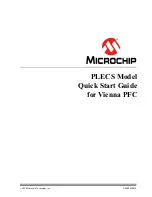
Enhanced Universal Serial Communication Interfaces (eUSCI_A, eUSCI_B) Overview
934
SLAU356I – March 2015 – Revised June 2019
Copyright © 2015–2019, Texas Instruments Incorporated
Enhanced Universal Serial Communication Interface (eUSCI) – SPI Mode
25.1 Enhanced Universal Serial Communication Interfaces (eUSCI_A, eUSCI_B) Overview
Both the eUSCI_A and the eUSCI_B support serial communication in SPI mode.
25.2 eUSCI Introduction – SPI Mode
In synchronous mode, the eUSCI connects the device to an external system through three or four pins:
UCxSIMO, UCxSOMI, UCxCLK, and UCxSTE. SPI mode is selected when the UCSYNC bit is set, and
SPI mode (3 pin or 4 pin) is selected with the UCMODEx bits.
SPI mode features include:
•
7-bit or 8-bit data length
•
LSB-first or MSB-first data transmit and receive
•
3-pin and 4-pin SPI operation
•
Master or slave modes
•
Independent transmit and receive shift registers
•
Separate transmit and receive buffer registers
•
Continuous transmit and receive operation
•
Selectable clock polarity and phase control
•
Programmable clock frequency in master mode
•
Independent interrupt capability for receive and transmit
shows the eUSCI when configured for SPI mode.
















































